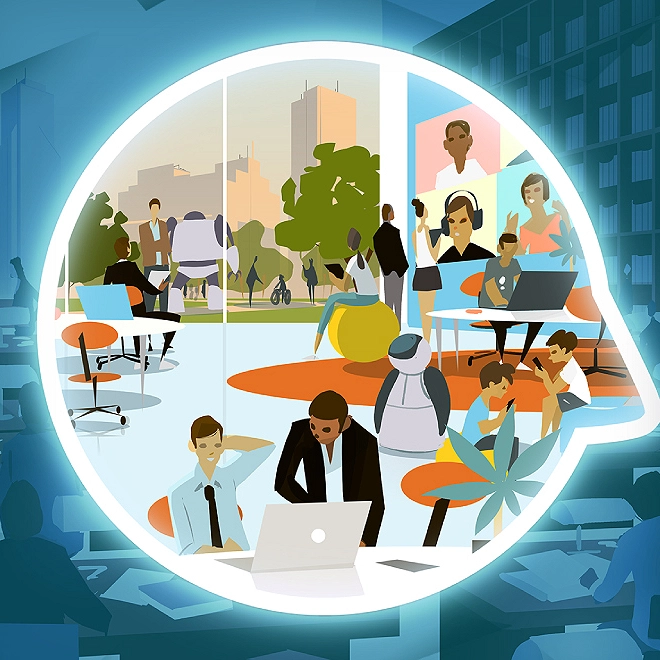The “phy-gital” workplace
The mass migration from office buildings to home offices during the pandemic led to some surprising conclusions. Contrary to pre-pandemic skepticism about the practicalities of remote working, most organizations have seen very real advantages to flexible working, including increased productivity, reduced operating costs and improved profitability. Employees have been developing new home-based office routines and lifestyle habits, many of which they prefer to their previous ways of working, in fact less than one-third is planning to resume their former work routine when their office reopens. This has obvious benefits for employers who can reduce their fixed costs and increase their agility post-pandemic by maintaining more remote working. But, given that most organizations, and the workers within them, will continue to benefit from colleagues spending a certain amount of time in the same physical space, leaders will need to shift their mental model of the workplace from either physical or digital to phy-gital.
This will see the integration of the best of physical and digital realms to create a work culture that supports all environmental and workstyle needs and preferences. It will mean developing an appreciation of the broader scope and technical challenges of working environments (from homes and coffee shops to libraries and publics spaces) as well understanding the relevant social needs including creative collaboration, interactive innovation, idea generation and general emotional support. There should also be strategies to ensure that the organizational structures and culture should be interpreted and maintained across a virtual workplace.
The needs, motivations, perspectives and cultural backgrounds of all workers should also be taken into account to ensure that individual differences and strengths are recognized and leveraged. This phy-gitally-enabled approach could even enrich the social interaction of some workers beyond what they had experienced in their former physical environment a recent study showed that some organizations had been operating in what was effectively a digital workplace (i.e., a screen-based workplace with minimal direct social interaction) within an existing physical workplace.
Ultimately, the goal must be to redefine the work environment so that it enables workers to deliver their best work possible whilst having the greatest flexibility to adapt to change. The events of the last year have prepared resilient organizations to look to the future, leave outdated workplace models in the past and thrive in the phy-gital future.




